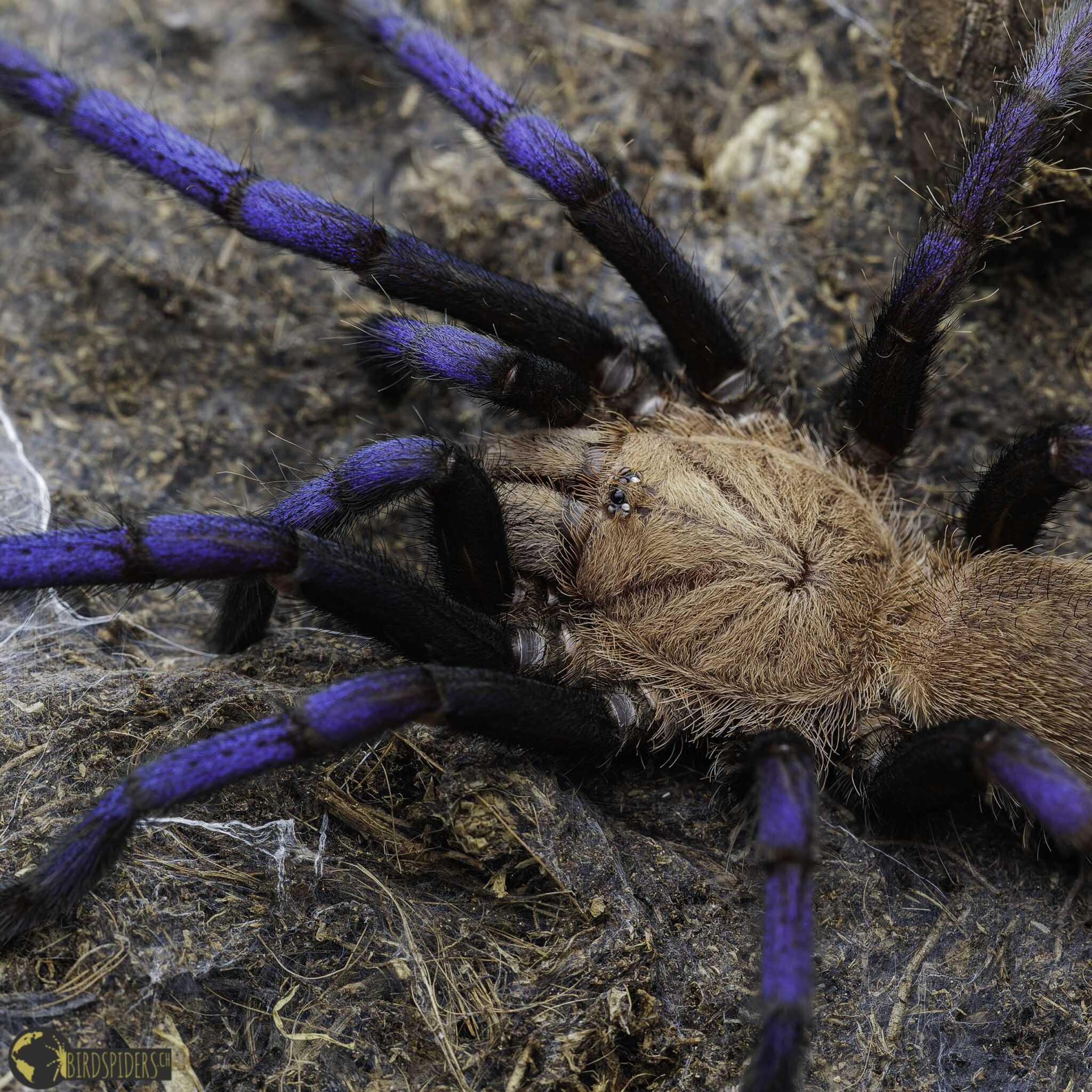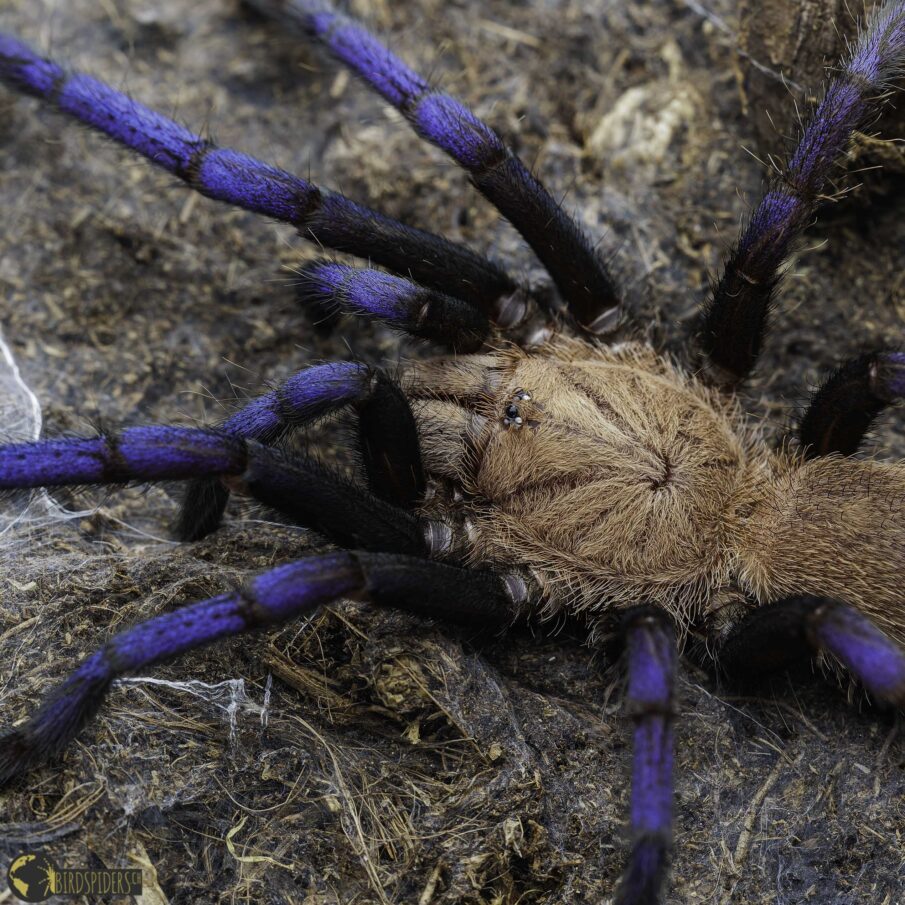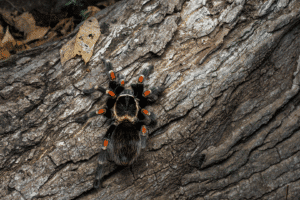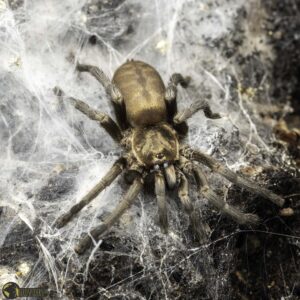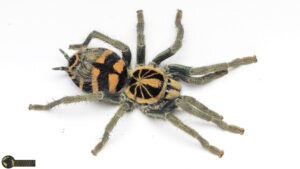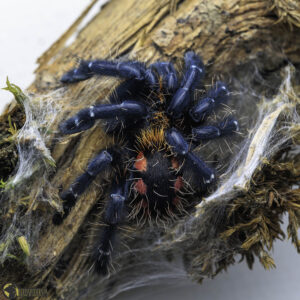Overview
Discover the stunning Birupes simoroxigorum, commonly known as the Neon Blue Leg tarantula. This tarantula is famous for its vibrant blue leg coloration, which appears almost luminescent and makes it truly unique among tarantulas. Native to Borneo, Malaysia, this species captivates arachnid enthusiasts and nature lovers alike. However, it is important to note that both male and female adults lose this striking blue coloration as they mature. Protecting and appreciating these fascinating creatures helps us celebrate the incredible diversity of the invertebrate world.
Natural History of the Neon Blue Leg Tarantula
Birupes simoroxigorum is found in the tropical rainforests of Sarawak, Borneo, Malaysia. This species thrives in humid, warm environments typical of its native habitat. The tarantula’s bright blue leg setae (hair) and cream-colored carapace pubescence provide excellent camouflage among the forest floor’s leaf litter and shadows during its juvenile stages. As adults, the blue coloration fades, and the tarantula adopts a more subdued appearance with light brown abdominal pubescence.
Like many tarantulas, B. simoroxigorum is a nocturnal predator, feeding on insects and other small invertebrates. Its unique stridulation organ, used for producing sound, helps distinguish it from other species in the Selenocosmiinae subfamily.
Taxonomy & Systematics of Birupes simoroxigorum
Birupes simoroxigorum was first described by Gabriel & Sherwood in 2019. It belongs to the family Theraphosidae, which includes many large and often colorful tarantulas. The genus name Birupes combines the Malaysian word “biru” meaning blue, and the Latin “pes” meaning leg or foot, directly referencing the tarantula’s distinctive blue legs.
This species is the type species of its genus and can be distinguished from other Selenocosmiinae tarantulas by the shape of its stridulation organ, which features a maxillary lyra ending in a pointed apex. Its unique coloration pattern—bright blue leg setae, cream carapace pubescence, and light brown abdominal pubescence—also sets it apart from other Bornean tarantulas.
The holotype and paratype specimens are deposited at the Sarawak Museum Department in Kuching, Malaysia. The species is currently accepted and recognized in the World Spider Catalog with the LSID urn:lsid:nmbe.ch:spidersp:050964.
Husbandry of the Neon Blue Leg Tarantula
Keeping Birupes simoroxigorum in captivity requires replicating its natural tropical environment to ensure health and longevity. Here are some husbandry tips for this exotic tarantula:
- Temperature: Maintain a warm environment between 24-28°C (75-82°F).
- Humidity: Keep humidity levels around 75-85% to mimic the rainforest conditions.
- Substrate: Use a deep, moisture-retentive substrate such as coconut fiber or peat moss to allow burrowing behavior.
- Enclosure: Provide a secure, well-ventilated terrarium with hiding spots like cork bark or artificial caves.
- Feeding: Offer a diet of crickets, roaches, and other appropriately sized insects.
- Handling: Minimal handling is recommended as tarantulas can be delicate and stressed by frequent interaction.
Note that the neon blue coloration is most vivid in juveniles and fades as the tarantula matures, so expect a change in appearance over time.
References
- Gabriel, R. & Sherwood, D. (2019). A new genus and species of theraphosid spider from Sarawak, Borneo (Araneae: Theraphosidae). Journal of the British Tarantula Society, 34(1), 19-34.
- World Spider Catalog. (2021). Birupes simoroxigorum Gabriel & Sherwood, 2019. Retrieved from http://www.wsc.nmbe.ch/species/5719
- Sarawak Museum Department, Kuching, Malaysia – Type specimen repository.
